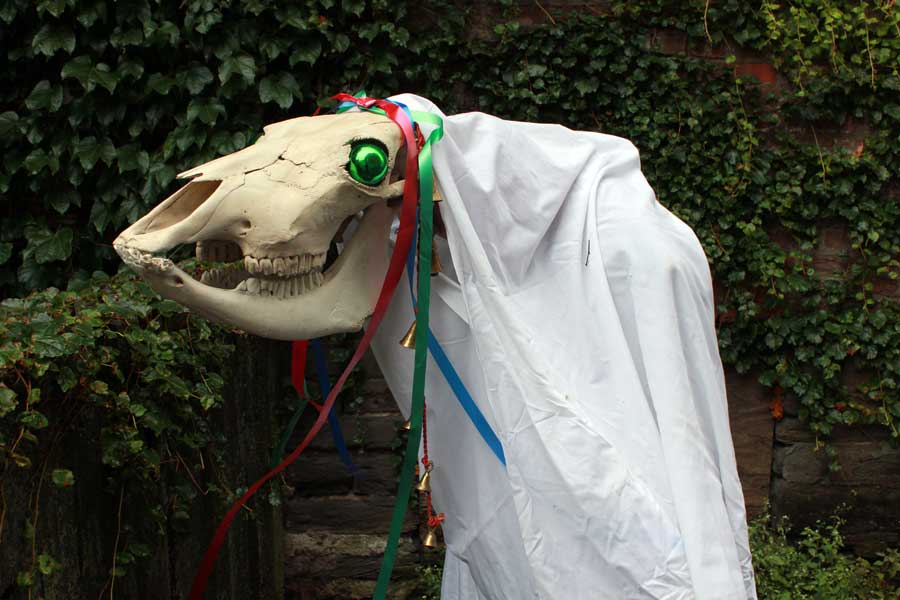This article originally appeared in The Skeptic, Volume 3, Issue 5, from 1989.
Of all the traditional festivals we celebrate each year, Christmas is one of the richest in terms of its customs. It is a time for rituals – some relatively modern, like Christmas Cards and Christmas Trees, and some exceedingly ancient, such as exchanging gifts and hanging decorations. There’s the build up to Christmas (“how many shopping days is it now?!”), and then there’s the aftermath. Christmas is one of the most important events in the year, and almost everyone will, to some extent, have some part to play in its customs.
The origins of our modern Christmas are ancient: in antiquity the winter solstice was celebrated on the 25th day of December, as the ‘Birthday of the Unconquered Sun’. This midwinter festival was a joyous time marked by festal fires to celebrate the slow departure of Winter, and to usher in fertility and good fortune. It was only around the beginning of the 4th Century that Christianity assigned the Nativity of Christ to the date of the existing pagan festival. The revamped festival soon absorbed influences from other sources, including those of the Germanic midwinter feast of ‘Yule’. By the 11th Century ‘Christ’s Mass’ had solidified into an uneven fusion of the Christian Nativity with Yule, Roman and pagan customs.
Many of these traditional elements were condemned as superstitious by the Protestant Reformation. Today, recognisable pieces of pagan ritual still remain: the mumming plays, with their pre-Christian themes of death and resurrection; sword dancing and wassailing.
One pagan practice that has nearly died out is the wearing of animal disguises at the Winter festival. In this country the custom lives on in the ‘Mari Lwyd’ Hobby Horse of Llangynwyd, with its hinged snapping jaws and bottle-glass eyes. Mari Lwyd visits the houses of the village wassailing – drinking toasts and singing the health of everyone on the route.

Memories of the ancient Fire Festivals live on with the Yule log. One Christmas Eve tradition, now sadly in decline, was to carry the new Yule log into the house and set it alight with the remnants of the previous year’s; it was commonly believed that to burn the log for twelve hours or more would ensure that the following year would be free of misfortune, and that the charred remains of the Yule log could preserve the house from fire, storms and lightning.
Another custom with extremely ancient origins is the decoration of buildings with greenery during the Christmas period. Today we buy our Christmas decorations man-made, pre-cut and shrink-wrapped; but whatever their form, evergreens such as holly, ivy and mistletoe have long been symbols of life and fertility, and their presence at midwinter festivals serves to ensure that life will return again.
The Church has found a convenient context for these fundamental beliefs: the berries of the holly symbolise the blood of Christ, and its prickles His Crown of Thorns. Mistletoe, however, occupies a special place. It has long had sacred and magical associations (it was the Golden Bough of classical legend) and to the Church it remains thoroughly pagan – by tradition it is never allowed to hang in a place of worship. For a long time mistletoe was the centrepiece of the ‘Kissing-Bough’, a large garland of greenery and ornaments which was hung from the ceiling of the main living-room.
Surprisingly, the Christmas tree is a relatively new tradition; originally of German origin, it spread to America in the 18th century, before coming to England, it is thought, in the early 1800’s. Queen Victoria and Prince Albert had their first tree in 1841, and its popularity soon spread.
Most areas have their own local Christmas customs; an interesting example is ‘Tolling the Devil’s Knell’, which takes place every Christmas Eve at All Saints’ Church in Dewsbury, West Yorkshire. The tenor bell sounds a stroke for every year since Christ’s Nativity – with the final stroke coinciding exactly with the first chime of midnight. Christ is born and Satan is dead – but every year the Devil tries to reappear, and one extra chime must be sounded to banish him, or he will return to plague the parish for the next twelve months.
But for all its fascination, Christmas is still a time better experienced than discussed. As an old Cornish Christmas Wassailers’ song has it:
Ask not the reason, from where it did spring;
For you know very well, it’s an old ancient thing
I hope you enjoy your customs this year – whatever they are – and a very Happy Christmas to you all!


